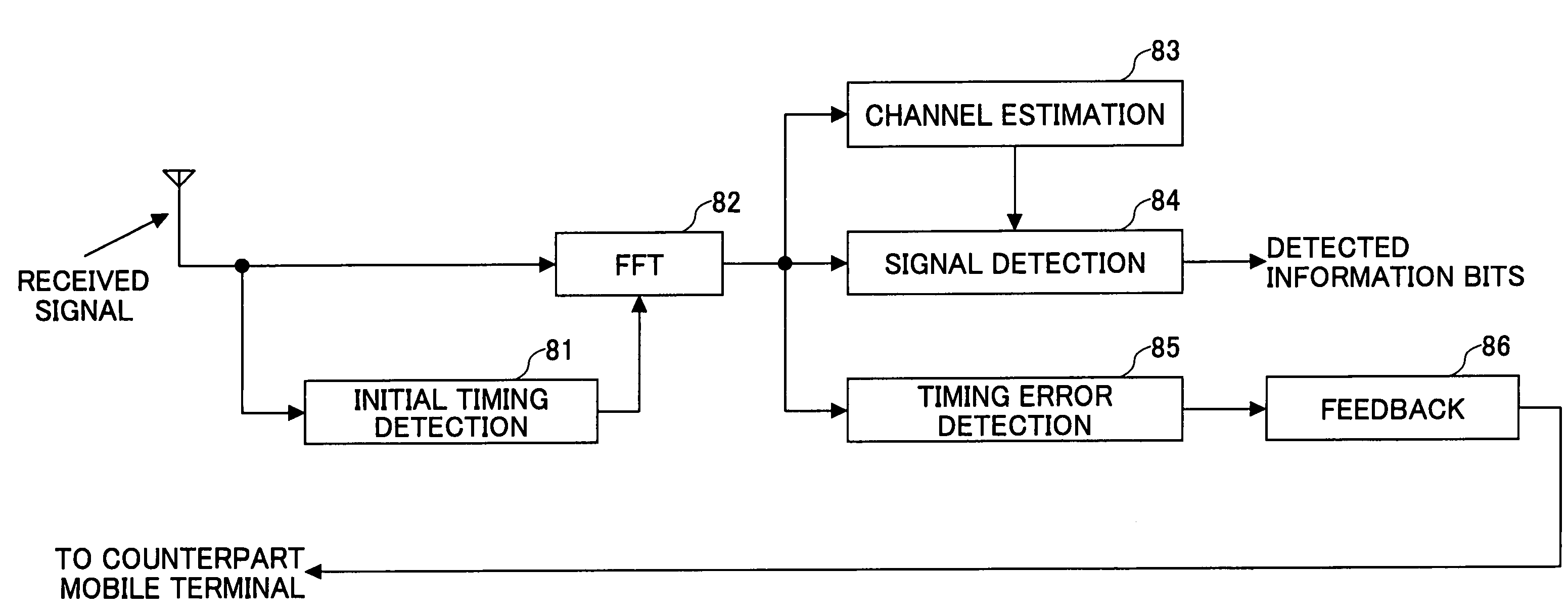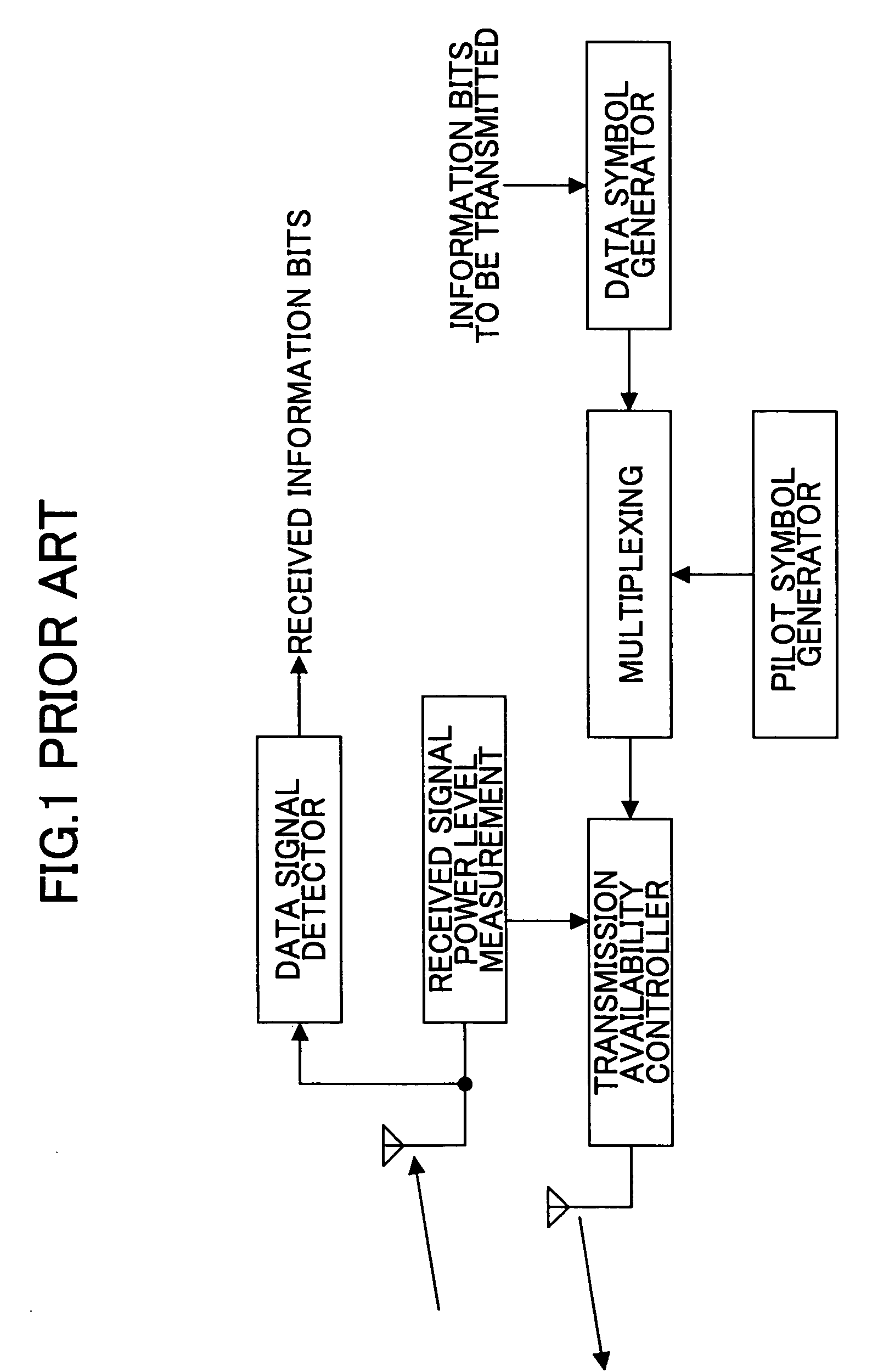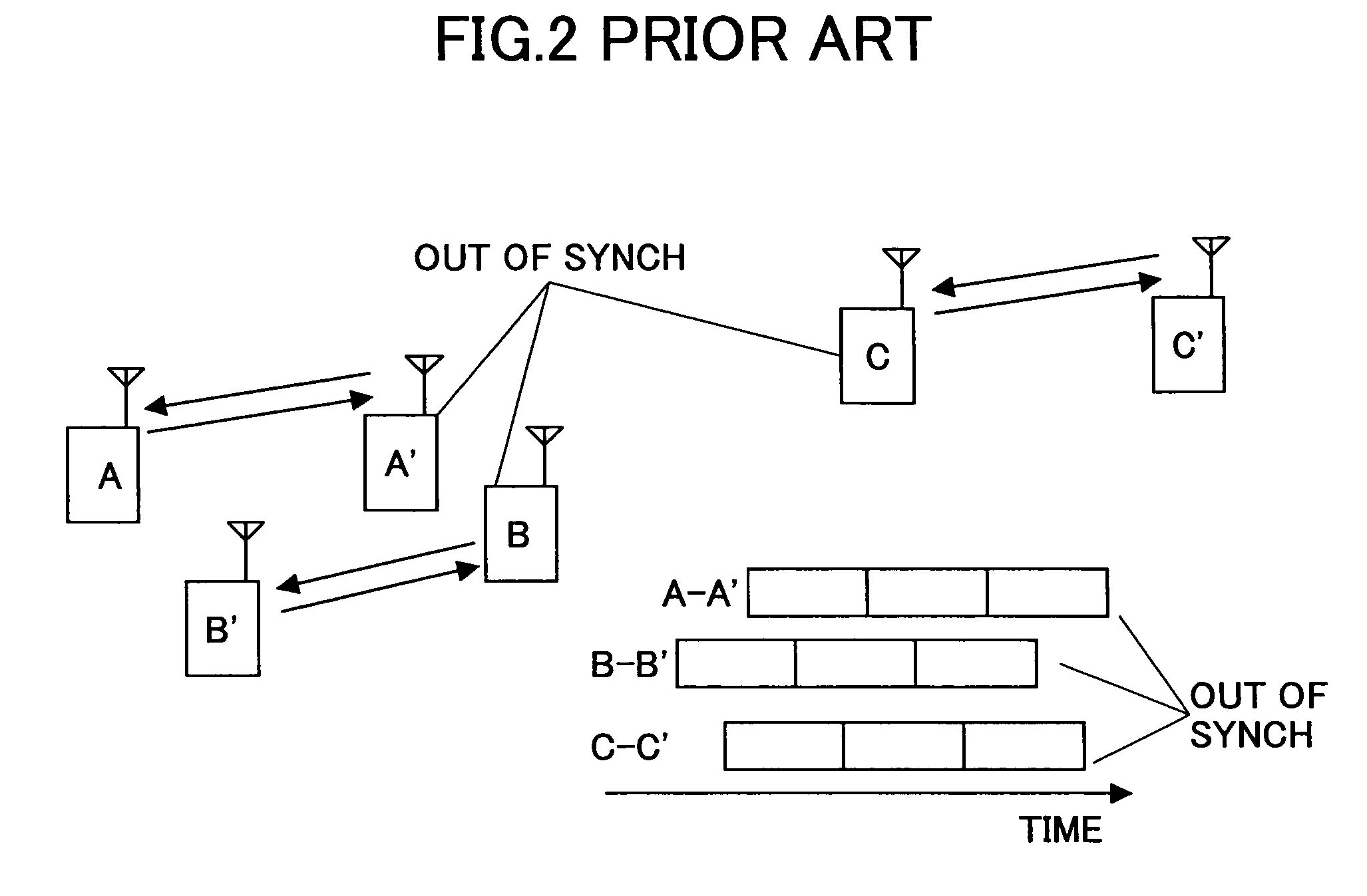Radio receiver and radio signal receiving method
a radio receiver and radio signal technology, applied in the field of wireless communication techniques, can solve the problems of inability to accurately measure the difference between receiving timing and streaming transmission, inability to use gps, and inability to produce an acceptable delay in real-time communication and streaming transmission
- Summary
- Abstract
- Description
- Claims
- Application Information
AI Technical Summary
Benefits of technology
Problems solved by technology
Method used
Image
Examples
embodiment 1
[0060]FIG. 6 is a schematic diagram illustrating mobile terminal pairs A-A′ and B-B′ communicating in sync with each other in the same frequency band. The mobile terminals may be another type of radio communication apparatus. The mobile terminals A and B are operating under the resource allocation for symbols shown in FIG. 7. Pilot symbols and data symbols are time-multiplexed, while the pilot symbols of mobile terminal A and the pilot symbols of mobile terminal B are multiplexed alternately along the frequency axis. In the following, explanation is made of how mobile terminal A′ currently communicating with mobile terminal A detects a timing difference between reception of a signal from mobile terminal (counterpart device) A and reception of a signal from mobile terminal (non-counterpart or non-connected device) B.
[0061]FIG. 8 is a block diagram of a receiver of the mobile terminal A′ employing an OFDM signal transmission / receiving scheme. The receiver includes an initial timing de...
embodiment 2
[0077]FIG. 11 is a schematic diagram illustrating resource allocation for symbols when the entire range of a frequency band is shared among three mobile terminals, unlike the previous embodiment shown in FIG. 7 in which two mobile terminals share the entirety of a frequency band. By determining an impulse response for each of the three mobile terminals, a receiving timing difference can be determined. In this case, however, IFFT operations at the timing error detection unit 85 are performed three times. In general, to determine impulse responses for N mobile terminals, N times IFFT operations have to be carried out.
[0078]FIG. 12 is a block diagram of the timing error detection unit 85 suitable for the arrangement shown in FIG. 11. The components shown in FIG. 9 are denoted by the same symbols. Demultiplexer 121 detects each of the pilot symbols appropriately, just like demultiplexer 91. In this example, each of the three types of pilot symbols placed at certain intervals along the f...
embodiment 3
[0081]In the third embodiment, a frequency band is divided into multiple frequency blocks (or subcarrier blocks), which arrangement is different from the first and second embodiments in which each user uses the entire range of the frequency band. In general, each of the frequency blocks includes one or more subcarriers. Each user carries out radio communications using one or more frequency blocks. Under this arrangement, the mobile terminals still have to be in sync with each other; otherwise, the desired signal and undesired signals cannot be appropriately detected and the signal quality is degraded due to interference between the frequency blocks used by the desired signal and the undesired signals. The signal quality can be measured based on the bit error rate, throughput, SIR, etc.
[0082]FIG. 13 is a schematic diagram illustrating an example of resource allocation for pilot symbols under the subcarrier block configuration. In this example, subcarrier block 1 is used by mobile ter...
PUM
 Login to View More
Login to View More Abstract
Description
Claims
Application Information
 Login to View More
Login to View More - R&D
- Intellectual Property
- Life Sciences
- Materials
- Tech Scout
- Unparalleled Data Quality
- Higher Quality Content
- 60% Fewer Hallucinations
Browse by: Latest US Patents, China's latest patents, Technical Efficacy Thesaurus, Application Domain, Technology Topic, Popular Technical Reports.
© 2025 PatSnap. All rights reserved.Legal|Privacy policy|Modern Slavery Act Transparency Statement|Sitemap|About US| Contact US: help@patsnap.com



